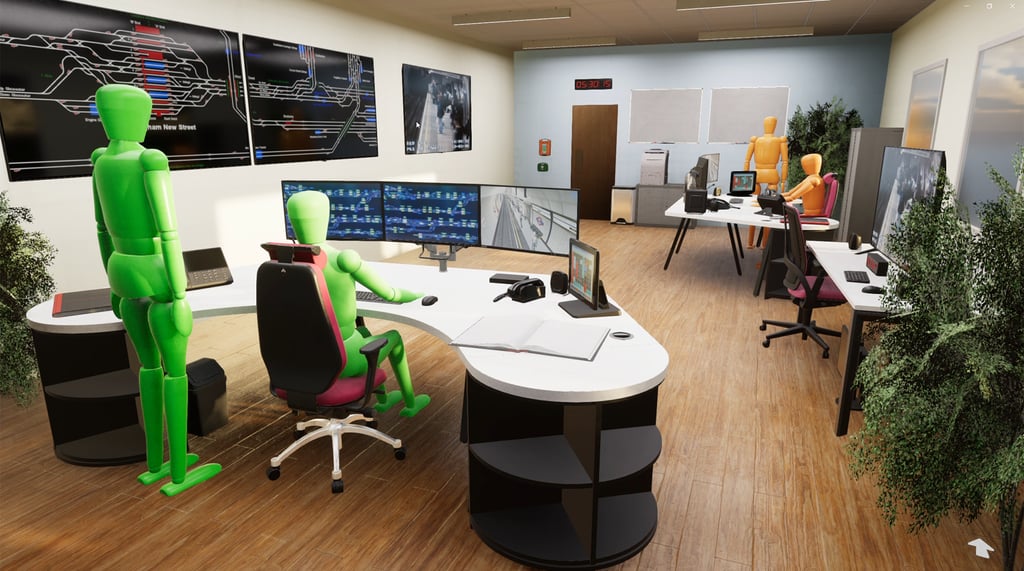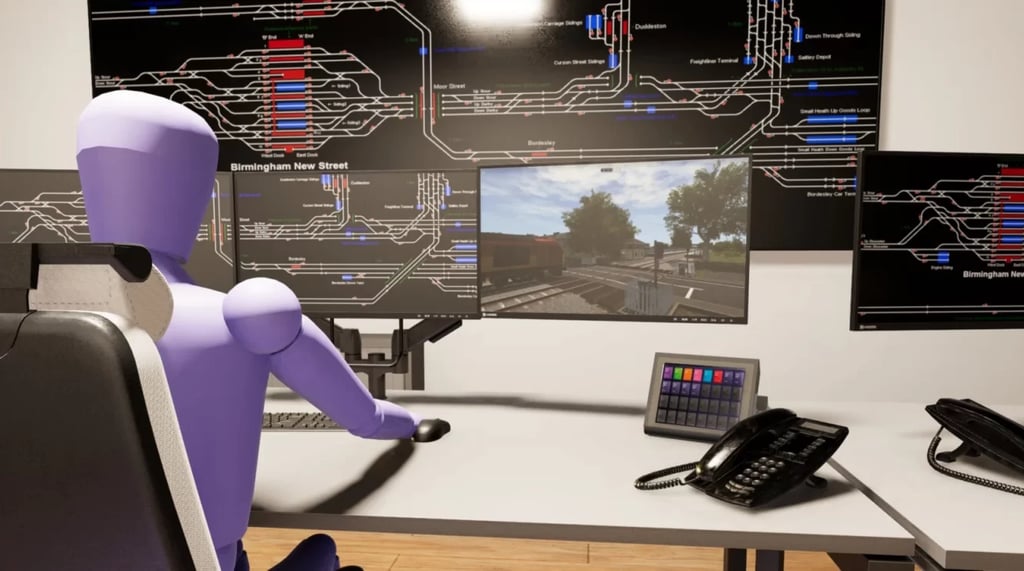CASE STUDY: Transport for London's Virtual Reality Design Tool
6/16/20254 min read


AT A GLANCE
An innovative state of the art tool conceived by the Human Factors Team within Transport for London (TfL).
The TfL Virtual Control Room (VCR) changes the way TfL can design, test, and deliver control rooms.
This immersive virtual reality tool opens the door to fast prototyping and option development.
The need for traditional physical mock-ups is removed, thereby increasing efficiency, and reducing capital expenditure.
Furthermore, the interactivity the tool provides allows for realistic simulation of control room operations as if in the real world.
The VCR was delivered by Agility 3 and accepted into use by TfL in February 2025.
BACKGROUND
Control rooms are the “nerve centre” of safety-critical industries, and their design can greatly influence how effectively their operators perform.
Design challenges include control room equipment layout related to the visibility of on-, and off-workstation equipment, reaches to equipment items such as keyboards and mice, and access to, and from, different functional areas and their workstation operators. Furthermore, display equipment graphical user-interfaces need to facilitate a ‘dialogue’ between operators and the systems they monitor and control.
Resolving these challenges ensures desired operator performance, particularly during demanding scenarios. Getting the design right before building the control room is essential to its performance in service.


CHALLENGE
TfL’s Human Factors Team recognised that there was an opportunity to improve the efficiency of control room design process, and minimise costs in doing so, compared to designing control rooms using conventional physical methods relying on manually measured and built life-size mock-ups.
TfL identified a “step change” in control room design development based on immersive, digital simulation. Obtaining the full benefits from such an immersive digital simulation is challenging.
The demands on any tool developed for the purpose would be high. True interactivity, as in a real control room, would require more than just a convincing simulation – it would need a totally seamless integration between the simulator environment and the operational technologies the control room teams use every day.
Seeing the applications within the simulation wouldn’t be enough; Operators would have to be able to use them too.
As with any major, complex engineering project, the Human Factors Team also had to consider stakeholder management, internal sponsorship, and communication. Outside of the detailed and specialist design process, how could the project be shared internally to easily demonstrate its rationale, benefits, and likely positive outcomes?
With different types of design feature to be incorporated and modelled, including desks, tables, chairs, screens, doors, windows, and many others, the design development process had to be as simple as possible; using intuitive tools to quickly create realistic real-world features (not generic representations of them), and the physical environment to accommodate them.
In short, the challenges involved in moving to an immersive digital model of a control room, despite the obvious benefits of doing so, were significant.
SOLUTION
TfL commissioned Agility3 to deliver their requirements for the tool. Agility3 had previously created TfL digital tools including VirtuRail and the Rail Experience Demonstrator.
The project combined virtual reality and TfL’s own powerful simulation technology with the latest video streaming techniques, to enable designers and operators to experience a control room at scale and identify design challenges earlier in the design process.
The VCR enables TfL to rapidly design control rooms from scratch, using inbuilt floorplan tools, automatic measurement of distances and angles, and a comprehensive library of assets and features that are exact matches of the products TfL uses, these can be easily created, saving time and effort.
This design tool rapidly reveals any potential issues with a room’s proposed layout. It can flag potential problems with sightlines, for example, where a screen is not fully visible from a certain part of the room, or even where an operator’s height may mean they can’t read a screen easily.
Similarly, the design tools can highlight where objects or equipment are difficult to reach, or inaccessible for some users, and they can show the potential interference of time-of-day characteristics like sunlight, glare, and darkening.
Most importantly it’s the VCR’s operational authenticity that makes it an invaluable tool for modelling how teams function in control rooms.
The entire control room experience can be replicated within the immersive virtual reality environment, using TfL’s Railway Engineering Simulator and emulations of the real service control software, for example communications tools and train monitoring software.
This means the control room teams can interact with these applications in exactly the same way as they would in a real control room, even to the extent of being able to simulate a conversation with a train driver via an instructor, or view CCTV of the network and stations, for example.
By presenting operating scenarios in the immersive environment, TfL’s Human Factors Team can simulate demanding scenarios, and observe whether the room design helps or hinders the operators’ response, and recalibrate the design as needed.
BENEFITS AND OUTCOMES
The adoption of the VCR tool by TfL enables the most efficient creation of realistic control room environments that produce credible, critical insights into human performance within them. This puts designers ahead of the curve and ensures designs are rapidly developed and accepted first time by their intended users.
Throughout the project and its adoption, TfL has also been able to export data from the tool into other applications, for example CAD tools, and so share them proactively to inform and involve stakeholders and internal sponsors.
But the VCR’s value is not limited to just rail. In any safety-critical industry – including, for example, self-driving vehicles – where making the control room work is key to making the processes work, the VCR solution can markedly increase efficiency in development, and reduce associated costs.
For more information about the VCR, and about how Agility3’s 3D visualisation and virtual reality environments can help your business de-risk its design projects and drive better operational outcomes, get in touch today.
